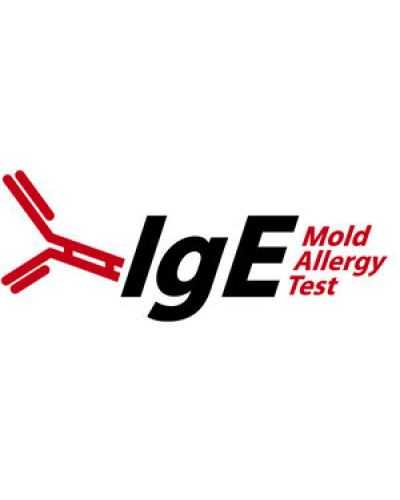Mold IgE Allergy Test
- Brand: Mosaic Diagnostics - Testing
- Product Code: GPL056
- Availability: In Stock
-
$360.00
- Ex Tax:$360.00
SIGNIFICANCE OF MOLD IGE ALLERGY TESTING
Mold allergy is an abnormal immune reaction to mold spores or mold cell components. People can be exposed to mold spores or byproducts at work, home or outdoors.
Certain occupations have potential for high mold exposure: crop and dairy farming, greenhouse plant husbandry, logging, carpentry, millwork, furniture repair and commercial baking.
A high exposure in the home can occur in damp areas such as bathrooms, kitchens and basements.
In general, working or living in damp buildings with moisture higher than 50% humidity, increases the possibility of mold exposure.
Immune reactions to mold can be identified by the level of immunoglobulin E (IgE) antibodies to specific mold species.
The Great Plains Laboratory now offers an IgE blood test that measures patient antibodies to most common molds. The IgE antibodies are detected in blood serum using an FDA-approved enzyme-linked immunosorbent assay (ELISA).
The most common molds known to cause allergic conditions include Alternaria, Aspergillus, Cladosporium and Penicillium. Use of both tests allow a wider array of molds to be detected.
The Mold IgE Allergy panel includes 13 mold allergens, with markers known to be involved in mold-related illnesses.
ADVANTAGES OF IGE MOLD ALLERGY TEST
IgE Mast Cell Inflammatory Mediators
Identify IgE reactivity level to specific mold species.
Connect immune responses to specific molds.
Suggest history of mold exposure.
Current higher reactivity or potential past lower reactivity.
Helpful for individuals with allergies, asthma and other respiratory conditions that may be due to histamine release and other inflammatory mediators resulting from IgE reactivity or other immune reactions.
Link IgE results with mold allergy symptoms, which include cough and postnasal drip, watery eyes, itchy eyes, nose, throat, runny or stuffy nose, or dry, scaly skin. In addition, possibly assist in identifying abnormal reactions to mold, including mold-induced asthma, allergic bronchopulmonary aspergillosis, allergic fungal sinusitis, hypersensitivity pneumonitis, and dampness and mold hypersensitivity syndrome (DMHS).
DIFFERENCE FROM MYCOTOX PROFILE AND WHY BOTH ARE BENEFICIAL

IgE looks at immune response to mold exposure.
MycoTOX Profile looks at mycotoxin levels excreted from the body.
Mold allergies and mold mycotoxin toxicity are distinct responses related to mold illness.
70% of patients exposed to mold have positive skin tests to those molds, indicating that testing for IgE antibody in blood will complement the mycotoxin test.
IgE levels predict individual response, mild or severe, to the molds in the environment.
IgE levels may indicate reactivity to mold species whose mycotoxin products were not excreted at the time of the mycotoxin test or are not among the mycotoxins included in the MycoTOX Profile.
The two tests provide a more comprehensive picture of individual mold exposure.
Mycotoxins predict the effects of toxins on multiple bio-systems in the body.
SPECIMEN REQUIREMENTS
Serum: 2 mL of serum in a gold-topped SST or royal blue-topped no additive tube is the absolute minimum.

